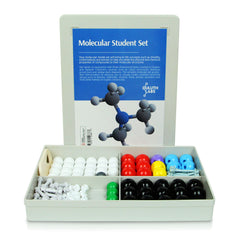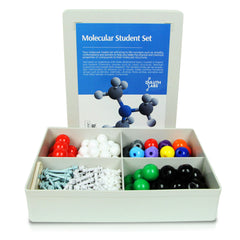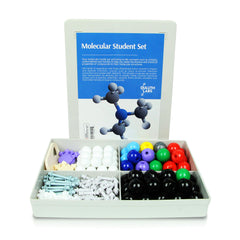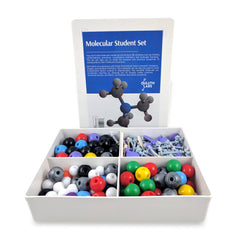Serotonin: The Source of Happiness
Ever wondered what causes us to be happy? Many scientists today link our happiness to a chemical called Serotonin.
The neurotransmitter serotonin is a chemical that is produced by the nerve cells. Being a neurotransmitter, it is able to relay messages from one part of the brain to another. It is made up of an essential amino acid and has the ability to be a natural mood stabilizer. Serotonin is known to impact every part of the body, from our emotions to our movements. It is the chemical which helps with eating, sleeping, and digesting the food we eat. A known fact about serotonin is that it is given to patients who suffer from depression and anxiety to help stabilize their moods.
So now that we have a basic understanding of serotonin. Let’s learn about its chemistry!
What does Serotonin look like in Chemistry?


Let’s Get Building!
Using your Student Molecular Set from Duluth Labs let’s create Serotonin! You’ll need:
-
10 Carbon Atoms
-
1 Oxygen atoms
-
2 Nitrogen atoms
-
12 Hydrogen atoms
-
12 Small connectors (compact small bonds for hydrogen)
-
10 Medium Connectors
-
8 Long connectors
-
Molecular Tool (for Disassembly)
Put aside all the atoms and connectors needed.
Let’s Start Building With Our Phenol Portion!

Note: Let’s begin with Carbon 4! We start building this portion of the molecule in an anti-clockwise direction.
Let’s start!
Steps:
-
1

1.Get one carbon atom (Carbon 4) then attach another carbon atom (Carbon 5) to it using a medium connector. Then using a small connector, attach a hydrogen atom to Carbon 4.
-
2

2.Attach a hydroxyl group (oxygen with hydrogen attached by a short connector) to Carbon 5 using a medium connector.
-
3

3.Then, get another carbon (Carbon 6) and attach this to Carbon 5 using 2 long connectors. Add a hydrogen atom to Carbon 6 using a small connector.
-
4

4.Add another carbon atom (Carbon 7) then attach this to Carbon 6 using a medium connector. Place a hydrogen atom on carbon 7 using a small connector
-
5

5.Get another carbon atom (Carbon 8) then attach this to Carbon 7 using 2 long connectors.
-
6

6.Add another carbon atom (Carbon 9) then attach this to Carbon 8 using a medium connector.
-
7

7.Using 2 long connectors join Carbon 9 to Carbon 4.
-

Yay! We've just built our Phenol Portion!
Note: Let’s continue by adding our Indole group!

Steps:
-
1

1.Get one Carbon atom (Carbon 3) then attach this to Carbon 9 of the phenol ring using a medium connector.
-
2

2.Using 2 long connectors, let’s attach Carbon 2 to Carbon 3. Then add a hydrogen atom to Carbon 2 using a short connector.
-
3

3.Get a Nitrogen atom and using a medium connector, attach this to Carbon 2. Then using a short connector, attach a hydrogen to the Nitrogen atom.
-
4

4.Using a medium connector, attach the Nitrogen atom to Carbon 8 of the phenol ring.
-

Yay! We've just built our Indole Portion!
Note: Let’s now add the Ethylamine portion of Serotonin!

Steps:
-
1

1.Get one carbon atom (Carbon 1’) then attach this to Carbon 3 (of the indole portion) using a medium connector. Then attach 2 hydrogen atoms to Carbon 1’ using 2 short connectors.
-
2

2.Get another carbon atom (Carbon 2’) and attach this to Carbon 1’ using a medium connector. Afterwards, add 2 hydrogen atoms to Carbon 2’ using 2 short connectors.
-
3

3.Lastly to complete the Ethylamine portion, get a Nitrogen atom and attach this to Carbon 2’ using a medium connector. Then add 2 hydrogen atoms to the Nitrogen atom using 2 short connectors.
Great work! Now we have our newly-built Serotonin!
We would love to see how your Serotonin Molecule turned out!
Comment and share pictures below!
Tune in next week for another Molecule of the week!
See you then xoxo :)



















